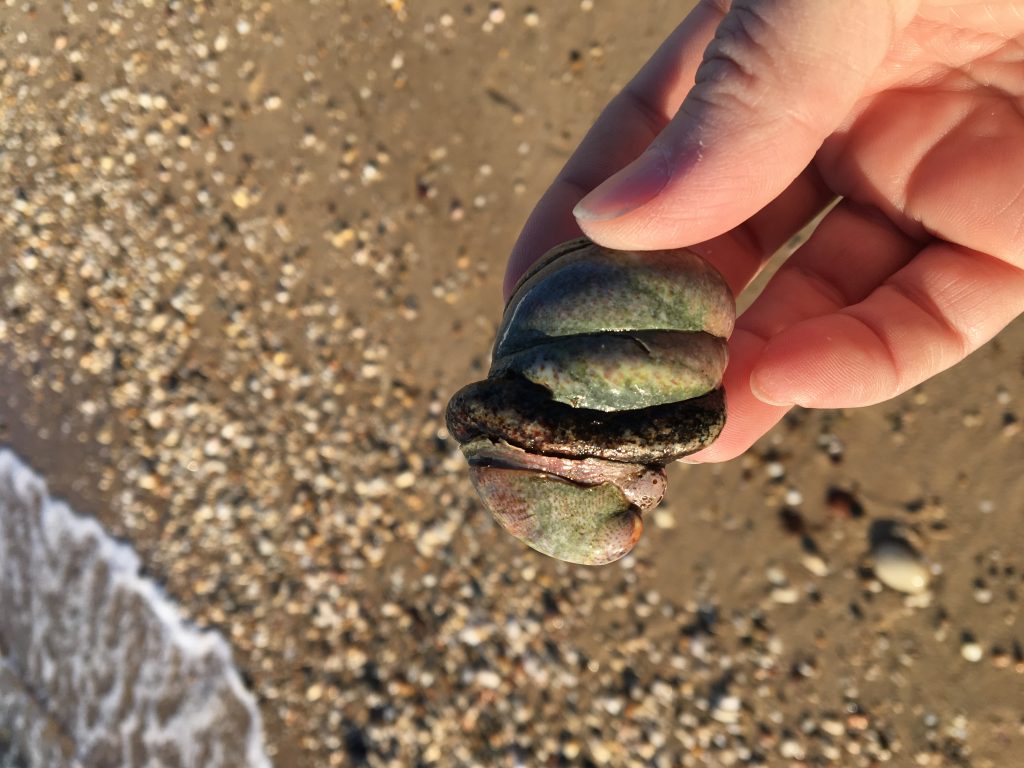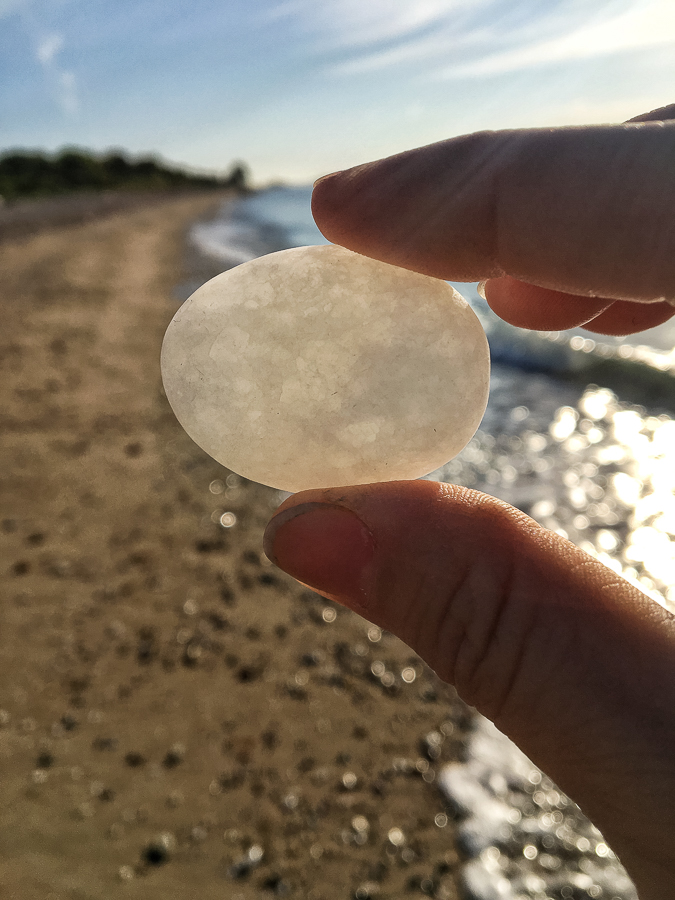Left to Right, top to bottom:
Row 1: Egg cases of the Knobbed Whelk (Busycon carica), Jingle Shells (Anomia simplex), part of a Horseshoe Crab shell (Limulus polyphemus), Slipper Shell Crepidula fornicata), beach stones.
Row 2: Portly Spider Crab (Libinia emarginata), whelk egg cases
Row 3: beach stones, Jingle Shell, whelk eggs, Portly Spider Crab, Jingle Shells, beach stone
Row 4: part of Horseshoe Crab shell, Portly Spider Crab, Bay Scallops (Argopecten irradians), plastic condiment bottle top
Row 5: plastic bottle top, beach stones, Jingle Shells, Irish Moss (Chondrus crispus)
Last month I delivered my son to his summer job teaching sailing on Long Island, and we took the ferry from Connecticut, because why drive when you can float? Also, traffic is much nicer on the ocean than in New York City. On my way home, I got to the ferry early so I could check out the shoreline, which turned out to be made of these amazing, translucent beach pebbles:
I also found the shattered pieces of the biggest horseshoe crab I’ve ever seen:
and an impressive pile of slipper shells demonstrating where they got their Latin name (Crepidula fornicata.)







Pingback: Update – The Coast Walk Project